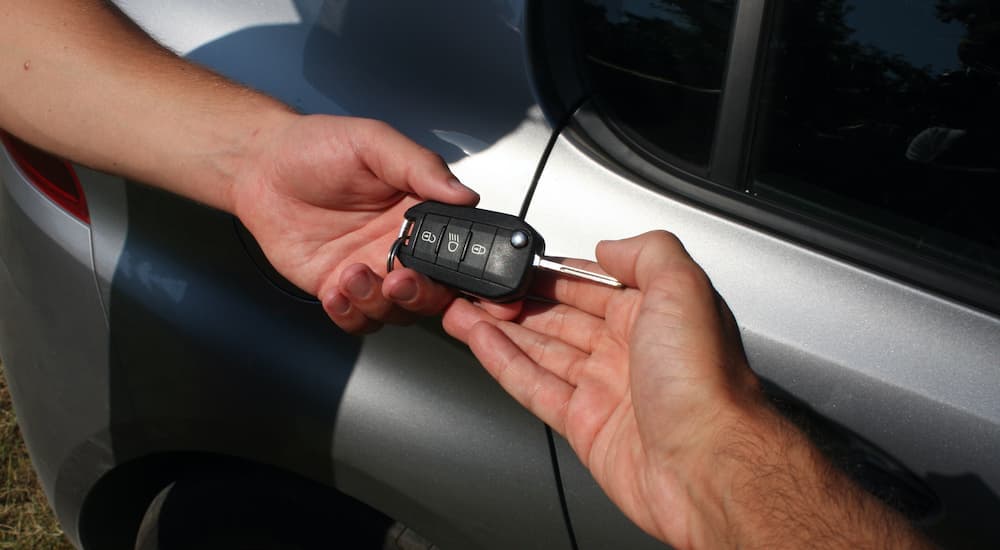There’s much to be said about the ordeal of buying a used car. The process is one that’s associated with being ripped off, searching through classified ads, and spending an entire day driving from location to location, and dealing with pushy salesmen who REALLY want that big commission check at the end of the month. It’s all so frightful, isn’t it? Well, that might be true, but just as stressful and time-consuming is being on the opposite end of this transaction and being the person who’s trying to sell their car. This situation can be just as frustrating and quite an arduous task. Luckily, if you’ve made the decision to sell your car, we’ve come up with some advice that will help make this process a little easier.
Setting a Price That’s Fair and Balanced
One of the incentives that you have when selling is that you ultimately are responsible for naming the price. Now, there are a few ways to go about this. You can sell at an extremely low price in hopes of getting your car sold quickly, or you can sell at a very high price and hope someone’s willing to pay the amount so you can make a substantial profit. Neither of these are good ideas, as you don’t want to incur a loss just to get rid of something. And no one’s going to overpay for something that’s been used…unless you’re selling an antique/vintage model.
The best thing to do is to set a price that’s fair and balanced. One that won’t be ridiculously high for a potential buyer, but one that’s not so low you don’t make a decent amount. The first thing you should do is consult Kelley Blue Book and find out how much the make and model you’re selling typically goes for. All cars have a resale value, and depending on what you currently have, it might have retained much of its value, or it might have depleted since you bought it.
Example–A Chevy Blazer depreciates in value by 50% after five years. While a new blazer goes from $30,000 to $40,000, a five-year-old model will go for half that, and other factors that affect pricing are wear and tear, mileage, and the history of the vehicle. Every vehicle is different. A Ford F-150 will depreciate around 36% after five years, giving it one of the highest resale values, whereas a Kia Sorrento depreciates by 55%.
Other Pricing Factors to Consider
Starting with resale value is a good place to begin when considering what price to sell your vehicle at. There are also mitigating factors that tie into setting a price. Before you consider selling your vehicle, getting it looked at by a mechanic will allow you to see if there are any pending or probable repairs that need attention. Hiding problems such as these from a potential buyer isn’t just ethically wrong; it’s illegal. The Consumer Rights Act of 2015 protects someone who buys a car that turns out to be faulty. If you had previous knowledge of the fault in question and didn’t report it to the customer, they’re entitled to a full refund.
Having a car checked by a mechanic before you sell it will help protect you and a potential buyer from falling into this trap. It’s also a good idea to get a detailed history report of the car you’re selling. If a potential buyer asks for a CARFAX report and you fail to produce one, this is a major red flag for most buyers. A consumer has every right to know the history of what they’re purchasing. Events such as body damages, previous accidents, or major repairs are all best told to the customer upfront because any detailed history they obtain will list them.
Clean Your Car
If you’ve got a date or a job interview, you don’t wear ripped-up jeans and your old 1992 Metallica tour shirt that has holes in it, do you? No, you make an attempt at looking presentable so you can make a positive impression because you only get one chance to make a first one. Before you think about selling your car, making it presentable as such is always a good idea. Think of the models you see at a dealership; they’re presented as pristine for a reason–because no one buys an eyesore intentionally.
Once you get your car looked over and decide on an appropriate price, the next step should be to make it look as presentable as possible. Clean it out as thoroughly as possible, consider getting it waxed, detailed, and air out any smells that are unagreeable. Basically, make it look like it just came from a dealership. Presentation is one of the most important factors in selling, and taking to time to make your vehicle look good will help it sell much quicker.
Dealing With a Potential Buyer
There are a wide variety of people you might encounter when selling a vehicle. And to be realistic, some are easier to deal with than others. Most people you’ll end up dealing with are simply looking for a method of transportation and will be reasonable when you show them a vehicle that’s reasonably priced, looks presentable and has a detailed history report. For some, that’s still not enough.
Occasionally, you’ll come across a buyer who wants you to sell your car at a price that’s too far below what you’re asking. There will always be people who will always try to low-ball you. Once you tell them no, they’ll either work with you or turn your offer down. It’s also important to remember to stay with someone whenever they’re with your car. If they ask to take it for a test drive, go with them. Most people are decent human beings, but it’s always a good idea to exercise caution. If someone asks to take the car to a mechanic, that’s their right, but once again, tell them you’ll take it to the location with them and do not let your car out of your sight while it’s gone.
While it’s not a rule, meeting with them at a location other than your house is recommended. Public parking places where there are at least a few people around make for good meeting spots.
Paper, Papers, Papers
The final stage for selling your car is filling out all of the necessary paperwork. Depending on what state you live in, this can be a timely ordeal. Most titles have an attachment to fill out that has spaces for all necessary information. When filling out the paperwork, make sure it’s properly filled out with all the necessary information and that the title is transferred over in a timely manner. When it comes to receiving payment from your buyer, ask for a cashier’s check. If for any reason a payment comes back as fraudulent or invalid, notify the authorities immediately.
Selling Through a Dealer as an Alternative
If you feel that the selling process might be too stressful for you, or you simply don’t have the time it takes to commit, there are alternatives. Many car dealerships will allow you to sell your car to them, and the legwork will be in their corner. It will save you time and any headache that comes with selling a car on your own.






